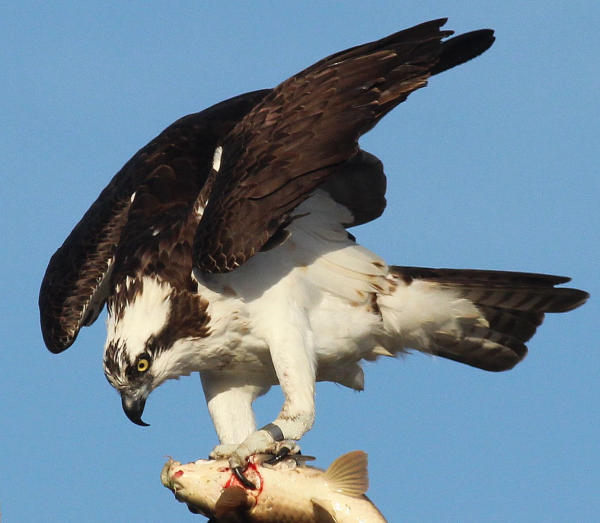
|
Come see Ospreys, in the air and on top of their huge nests, at the annual Flaming Gorge Osprey Watch. The free event will be held July 14 from 9 am to noon, next to the parking lot at the Flaming Gorge Dam Visitor Center. The visitor center is in the city of Dutch John, at the south end of Flaming Gorge Reservoir in northeastern Utah.
"The birds are super active this time of year, especially during the morning hours," said Tonya Kieffer, regional conservation outreach manager for the Utah Division of Wildlife Resources. "In the afternoon the temperature climbs, the wind starts to blow, and the birds become less active."
Kieffer explained the Osprey Watch is a fun event for the whole family, and it’s absolutely free. “While you’re at the event,” she says, “you may also want to try the Flaming Gorge Dam tour. If you take the tour, you might see some of the large rainbow trout that Osprey feed on.”
Spotting scopes will be set up to enhance your viewing experience, and biologists will be available to teach you more about the life history of these interesting fish-eating birds of prey. "If you’re lucky," Kieffer said, "you might be watching right at the moment an Osprey decides to dive feet first into the nearby water, only to emerge with a fish in its powerful talons. After capturing the fish, it will carry the fish back to its perch or nest and share it with its mate and young. You’ll also hear the Ospreys’ calls as they fly near us.”
In addition to Ospreys, Kieffer noted other birds of prey are frequently spotted at the annual event, including Golden Eagles and American Kestrels.
Kieffer explained that Ospreys eat a diet that’s almost exclusively fish. “They catch a fish about one out of every four times they dive,” she said. “That’s a great success rate.”
Osprey return to Flaming Gorge every year to nest and raise their young. "A breeding pair will build on the same nest year after year,” Kieffer explained, “so a nest that's 10 feet tall is a fairly common sight at the Gorge. We'll aim spotting scopes at a couple of the nests so you can see the females and their young."
For more information, you can call Tonya Kieffer at the UDWR's Northeastern Region office at 801-995-2972 or 435-781-9453.